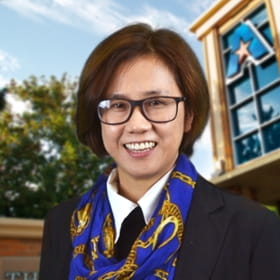
A University of Texas at Arlington professor whose work focuses on coding activities that do not involve computers or computer programming saw her research recently published in two noted journals.
Joohi Lee, professor in the College of Education, is the author of "Implementing Unplugged Coding Activities in Early Childhood Classrooms," published in Early Childhood Education Journal. She also authored "Coding in Early Childhood," published in Contemporary Issues in Early Childhood.
Coding or programming involves planning or writing a detailed set of directions that a machine interprets and performs to accomplish a specific task
"Coding has become common in early and elementary education," writes Dr. Lee. "Early childhood educators must know and provide children with concrete experiences related to coding in ways children enjoy and understand."
Machines and devices operated by coding systems are ubiquitous in the lives of children, and this constant exposure promotes their interest in how things operate or move automatically. Resources on introducing young children to the basic tenets of coding in a developmentally appropriate way, however, have been difficult to access.
In her research, Lee addresses this deficiency in the area of early education, providing appropriate guidelines for teachers to use when implementing coding in their classrooms.
Although the term "coding" is relatively new in the world of early childhood education, children frequently use unplugged (or non-computer) coding in their daily lives when they use step-by-step procedures to complete a task. Teachers can learn to identify these moments so they can introduce and implement coding in their classrooms.
Lee establishes that before attempting to implement coding activities with young learners, teachers should make sure those children are familiar with directional words, sequential words and combinations of both. They should also understand those words in a space including a grid, as this knowledge will provide a foundation for when they eventually transition to plugged-in activities.
Finally, young students should be able to decode in order to code, meaning they should understand directional or sequential words before creating directions using these words.
"Starting with children's routines or daily life experiences is an efficient way to help them become familiar with coding and do it themselves," Lee said.
- Written by Robert Rummel-Hudson, College of Education






